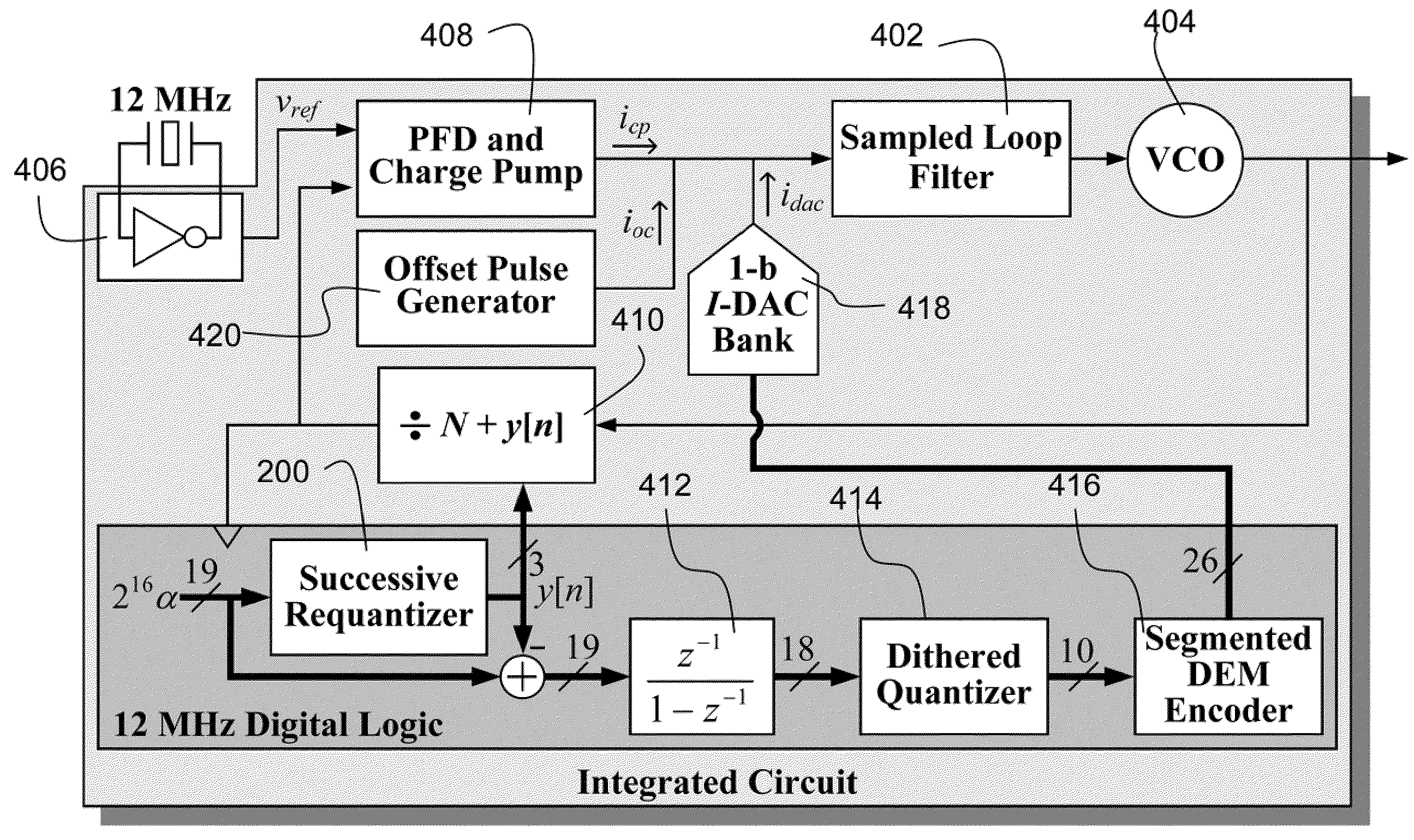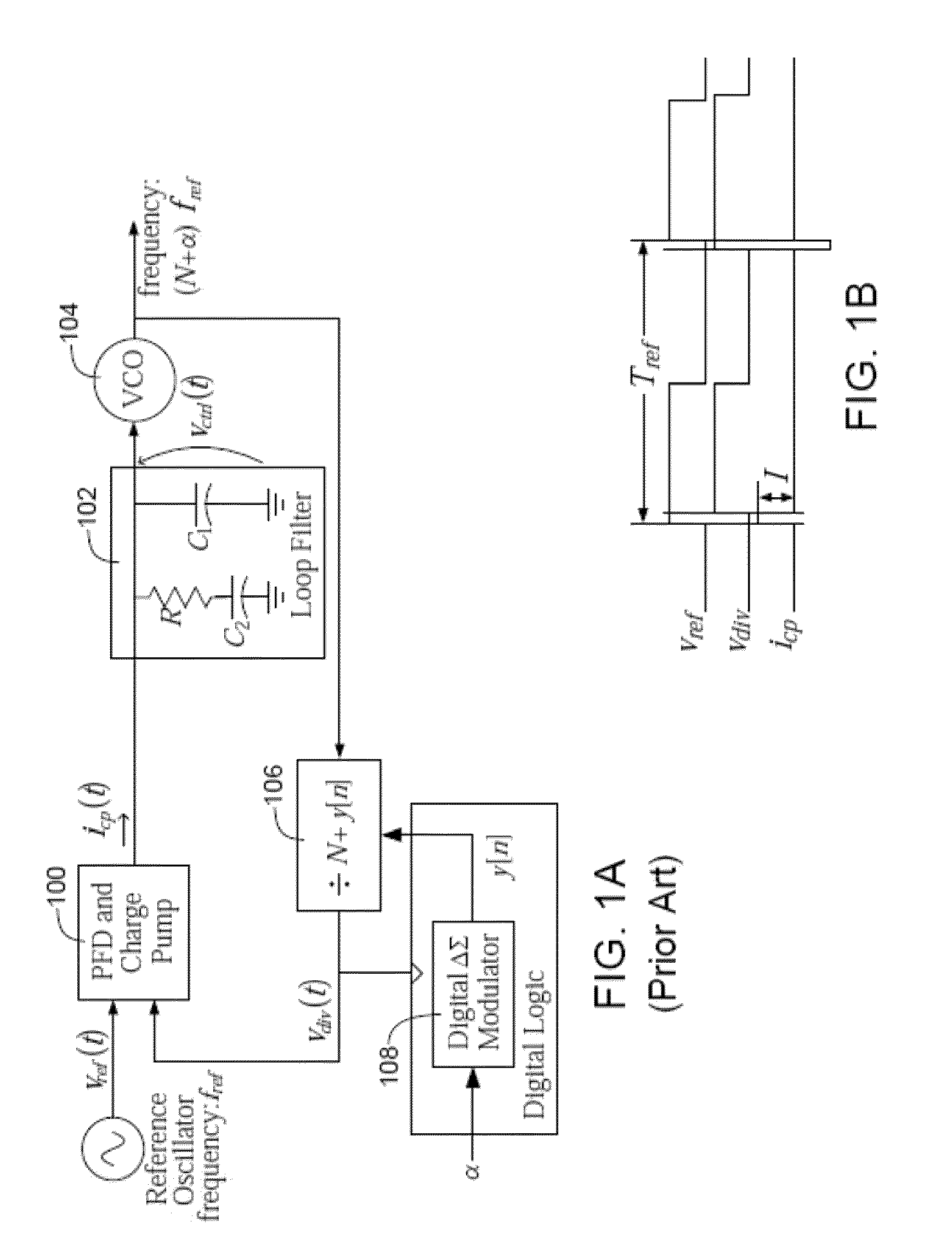Nonlinearity robust successive requantizer
a requantizer and robust technology, applied in the field of wireless communication, can solve the problems of reducing the performance of other aspects, reducing the power consumption and the cost of commercial communication devices, and requiring stringent spurious tone requirements for dacs in wireless applications
- Summary
- Abstract
- Description
- Claims
- Application Information
AI Technical Summary
Benefits of technology
Problems solved by technology
Method used
Image
Examples
Embodiment Construction
[0020]It is critical spurious tones in the noise introduced by DACs and fractional-N PLLs have very low power. Unfortunately, spurious tones are inevitable in the phase noise of fractional-N PLLs. In principle, dither applied to a modulator can prevent the quantization noise from containing any spurious tones whatsoever. In practice, digital delta sigma modulators are major sources of spurious tones in oversampling DACs and fractional-N PLLs and are believed by the present inventors to give rise to spurious tones whenever their quantization noise is subjected to nonlinear distortion.
[0021]The present invention identifies and addresses a surprising fundamental source of spurious tones in fractional-N PLLs, namely, the digital ΔΣ modulator. The fractional-N PLL is identified as the fundamental source of spurious tones in the PLL's phase noise. This is true even when dither is used to prevent spurious tones in the ΔΣ modulator's quantization noise. Regardless of how dither is applied, ...
PUM
 Login to View More
Login to View More Abstract
Description
Claims
Application Information
 Login to View More
Login to View More - R&D
- Intellectual Property
- Life Sciences
- Materials
- Tech Scout
- Unparalleled Data Quality
- Higher Quality Content
- 60% Fewer Hallucinations
Browse by: Latest US Patents, China's latest patents, Technical Efficacy Thesaurus, Application Domain, Technology Topic, Popular Technical Reports.
© 2025 PatSnap. All rights reserved.Legal|Privacy policy|Modern Slavery Act Transparency Statement|Sitemap|About US| Contact US: help@patsnap.com



